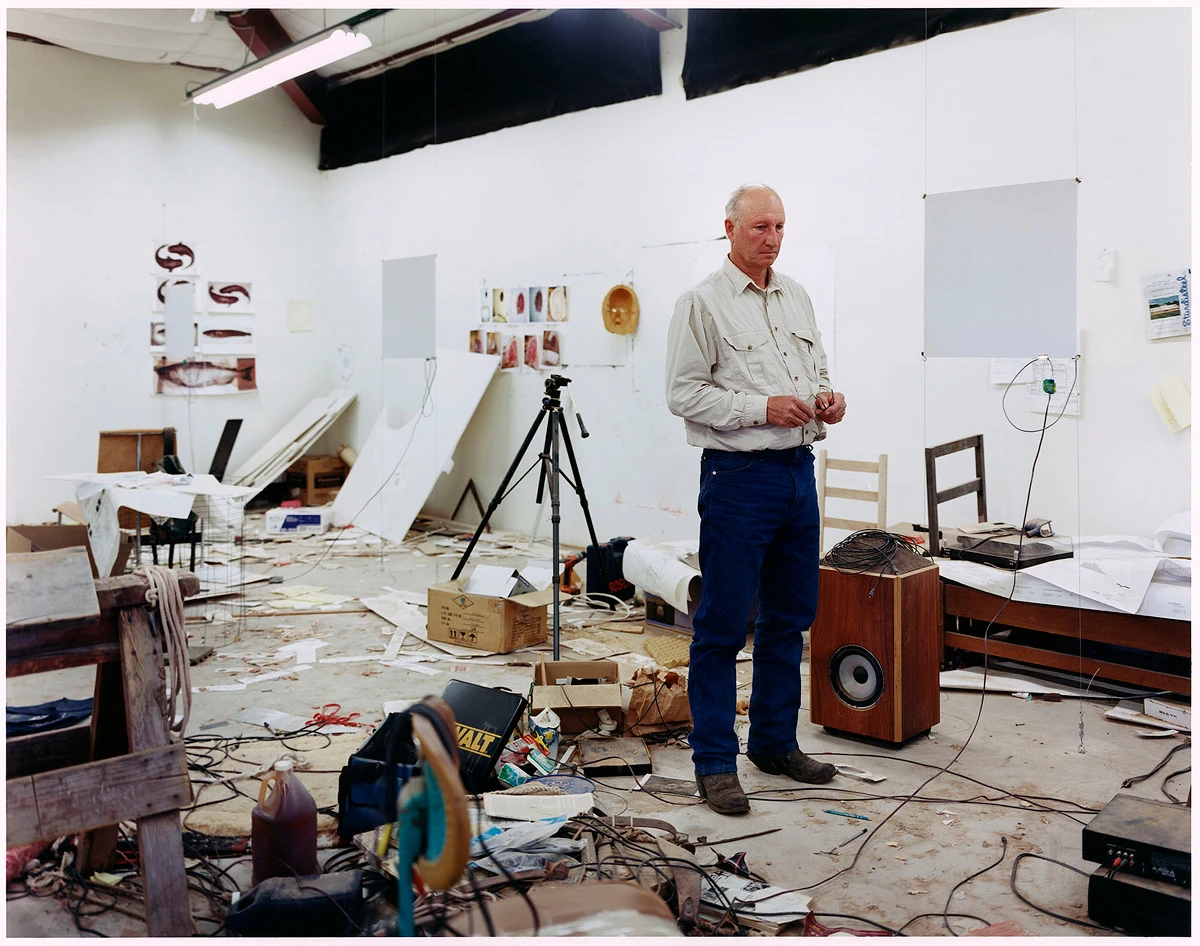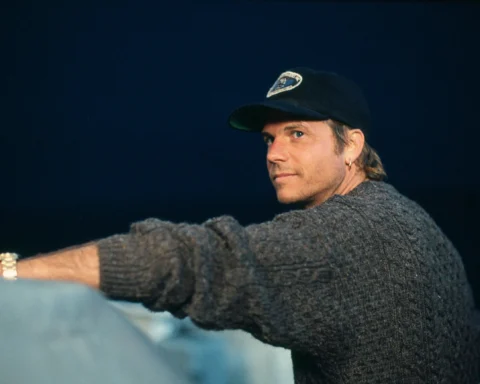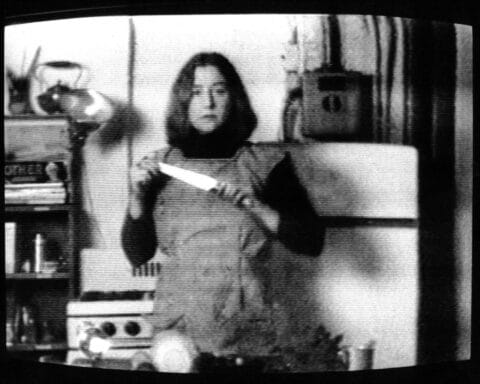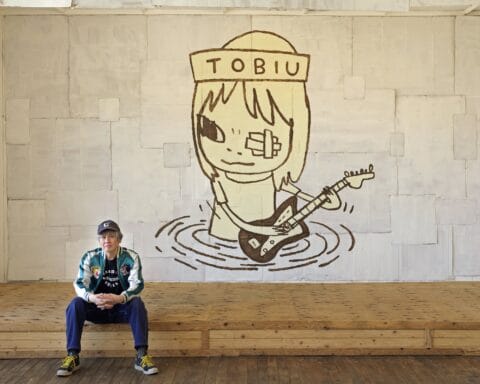Bruce Nauman, an American artist whose work spans five decades, is a seminal figure in contemporary art. His oeuvre, which includes performance, video, sculpture, and installation, challenges conventional understandings of art and engages with themes of language, perception, and the human condition. Nauman’s art is characterized by its intellectual rigor, conceptual depth, and a relentless interrogation of the boundaries of artistic practice. Through his diverse body of work, he has continually pushed the limits of what art can be, transforming mundane actions and materials into profound statements on existence.
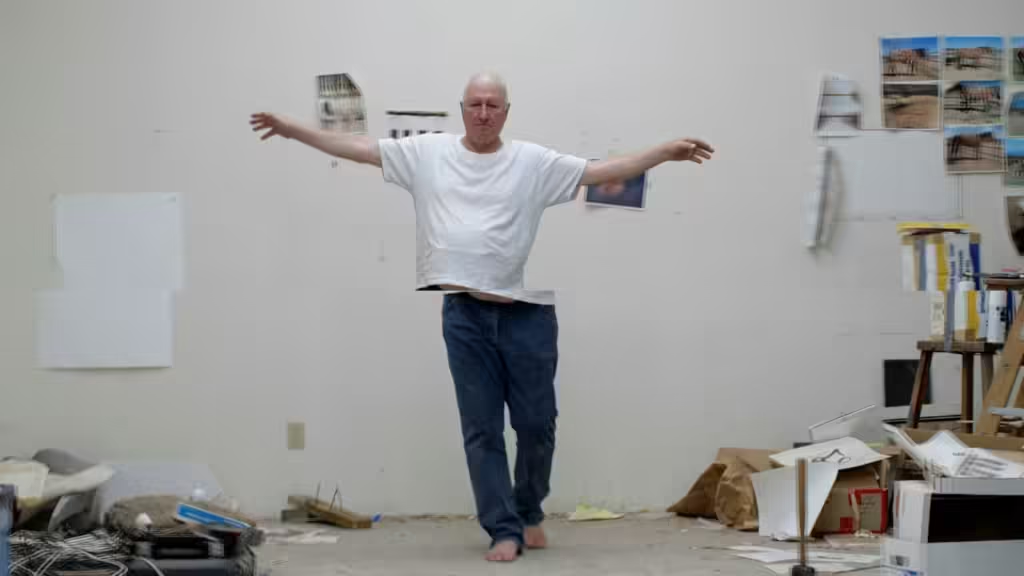
Early Career and Influences
Born in Fort Wayne, Indiana, in 1941, Nauman studied mathematics, physics, and art at the University of Wisconsin-Madison before completing an MFA at the University of California, Davis. His early work was profoundly influenced by the avant-garde movements of the 1960s, particularly Minimalism and Conceptual Art. However, Nauman quickly diverged from these movements, developing a unique voice that merged rigorous conceptual underpinnings with an exploration of the absurd and the grotesque.
Nauman’s exposure to a variety of disciplines during his formative years played a crucial role in shaping his artistic vision. The analytical rigor of mathematics and physics instilled in him a methodical approach to problem-solving and a fascination with the underlying structures of reality. Meanwhile, his art education introduced him to the works of influential artists such as Marcel Duchamp and John Cage, whose radical ideas about the nature of art and its role in society deeply resonated with Nauman.

Language and Perception
Language plays a central role in Nauman’s work. His use of text, often rendered in neon, interrogates the relationship between language and meaning. Works like “The True Artist Helps the World by Revealing Mystic Truths” (1967) and “Eat/Death” (1972) demonstrate his fascination with the ambiguities and contradictions inherent in linguistic communication. By juxtaposing words and phrases in unexpected ways, Nauman disrupts conventional meanings and invites viewers to question their assumptions.
One of Nauman’s most iconic works, “Raw War” (1970), exemplifies his ability to manipulate language to evoke powerful psychological responses. The simple inversion of the word “war” to “raw” transforms a familiar concept into something unsettling and unfamiliar, forcing viewers to confront the raw, visceral nature of conflict. This linguistic playfulness is a hallmark of Nauman’s practice, revealing the instability of meaning and the potential for language to both illuminate and obscure.
Nauman’s exploration of perception extends to his video works, where he often uses his own body as a subject. In pieces like “Walking in an Exaggerated Manner Around the Perimeter of a Square” (1967-68) and “Bouncing in the Corner” (1968), Nauman’s repetitive, mundane actions are transformed into meditative exercises that challenge viewers to reconsider the nature of time and physicality. These works highlight the performative aspect of Nauman’s practice, emphasizing the importance of process and the artist’s presence in the creation of meaning.
In “Clown Torture” (1987), Nauman takes his exploration of perception to a more disturbing level. This multi-channel video installation features clowns engaged in various torturous activities, such as screaming, laughing maniacally, and performing repetitive actions. The work’s chaotic, disorienting nature forces viewers to confront their own discomfort and complicity in the spectacle of suffering, raising questions about the nature of entertainment and the boundaries between art and life.
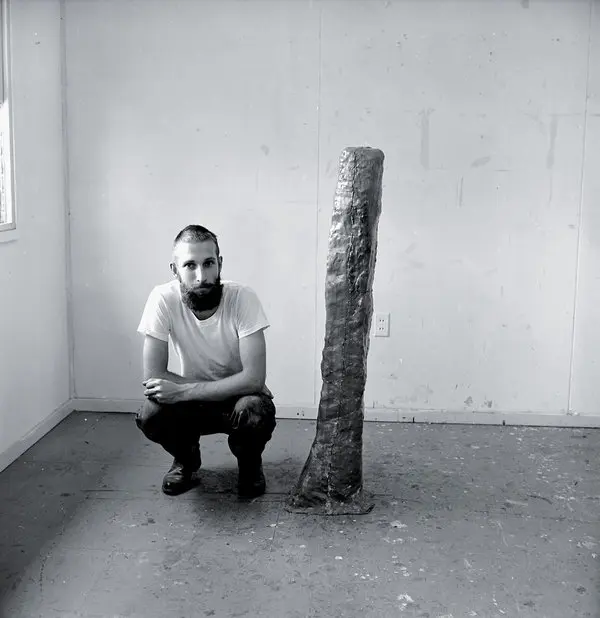
Space and the Body
The physicality of Nauman’s work is further explored in his sculptures and installations. His use of space is both disorienting and provocative, as seen in “Green Light Corridor” (1970), where viewers are invited to navigate a narrow, fluorescent-lit passage. This engagement with the viewer’s body and sense of space is a recurring theme in Nauman’s work, compelling an active participation that is both physical and psychological.
Nauman’s body of work also delves into themes of pain, discomfort, and the grotesque. Pieces like “Clown Torture” (1987) and “Hanging Heads” (1989) confront viewers with unsettling imagery that evokes visceral responses. These works challenge the boundaries between art and life, forcing viewers to confront their own discomfort and engagement with the artwork.
In “Double Steel Cage Piece” (1974), Nauman constructs two concentric steel cages, one inside the other, creating a claustrophobic environment that restricts movement and induces a sense of confinement. This work exemplifies Nauman’s ability to manipulate space to evoke psychological responses, highlighting the tension between freedom and constraint, and the impact of architecture on human experience.
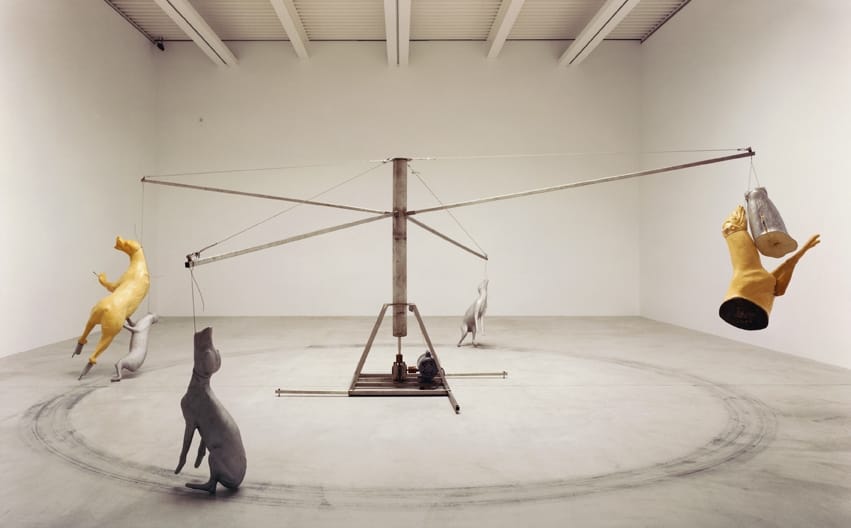
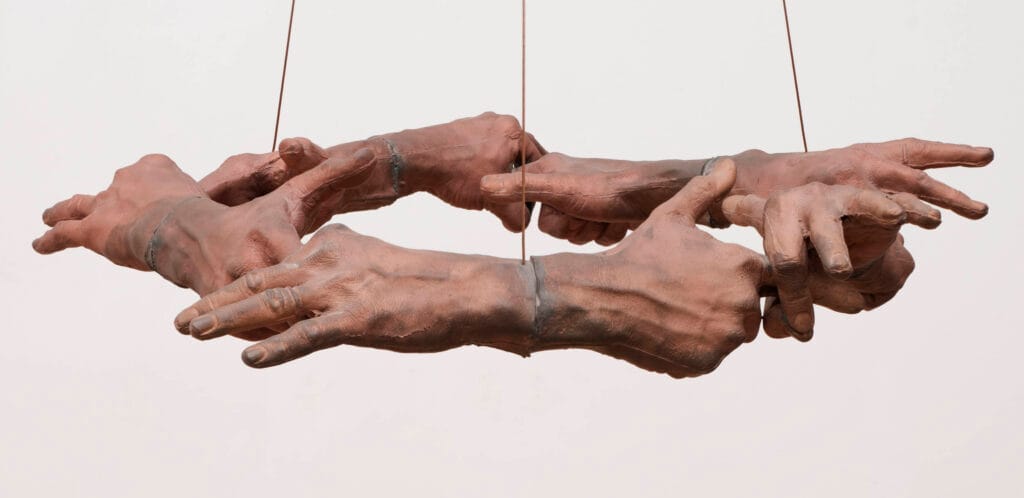
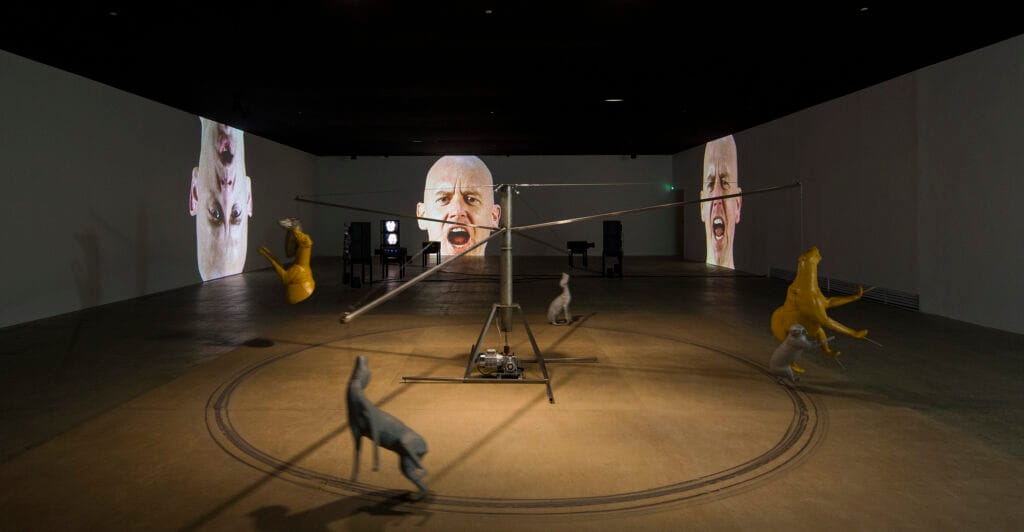

Themes of Pain and Discomfort
Nauman’s exploration of pain and discomfort is not merely an aesthetic choice but a profound commentary on the human condition. His works often serve as metaphors for psychological and emotional states, using physical discomfort to evoke deeper, more existential anxieties.
In “Body Pressure” (1974), Nauman provides written instructions for viewers to press their bodies against a wall, creating a private, introspective experience that blurs the line between artist and audience. This work exemplifies Nauman’s interest in the embodied experience of art, using physical sensation as a conduit for exploring internal landscapes of thought and feeling.
His fascination with the grotesque is perhaps most evident in “Hanging Heads” (1989), a series of disembodied, distorted heads suspended from the ceiling. These macabre sculptures confront viewers with the fragility and vulnerability of the human form, evoking a visceral sense of unease and mortality. By engaging with themes of decay and disfigurement, Nauman challenges conventional notions of beauty and confronts the darker aspects of the human experience.

Legacy and Influence
Nauman’s impact on contemporary art is profound. His relentless questioning of artistic conventions and his exploration of the human condition have influenced generations of artists. His work is characterized by a willingness to embrace ambiguity and complexity, refusing to offer easy answers or conventional beauty.
Nauman’s art is not easily categorized, and this resistance to definition is central to its power. His career is a testament to the possibilities of art as a form of intellectual and emotional inquiry. By continually pushing the boundaries of what art can be, Bruce Nauman has created a body of work that is as challenging as it is essential.

In conclusion, Bruce Nauman’s art is an intellectual odyssey that invites viewers to engage with fundamental questions about language, perception, and the human experience. His work is a dynamic interplay of concept and form, challenging audiences to look beyond the surface and engage with the deeper currents of meaning that flow through his art. As such, Nauman remains a pivotal figure in the landscape of contemporary art, his legacy defined by a relentless pursuit of the mystic truths that lie at the heart of the human condition. Through his diverse and provocative body of work, Bruce Nauman continues to challenge, inspire, and illuminate the complexities of the world we inhabit.
